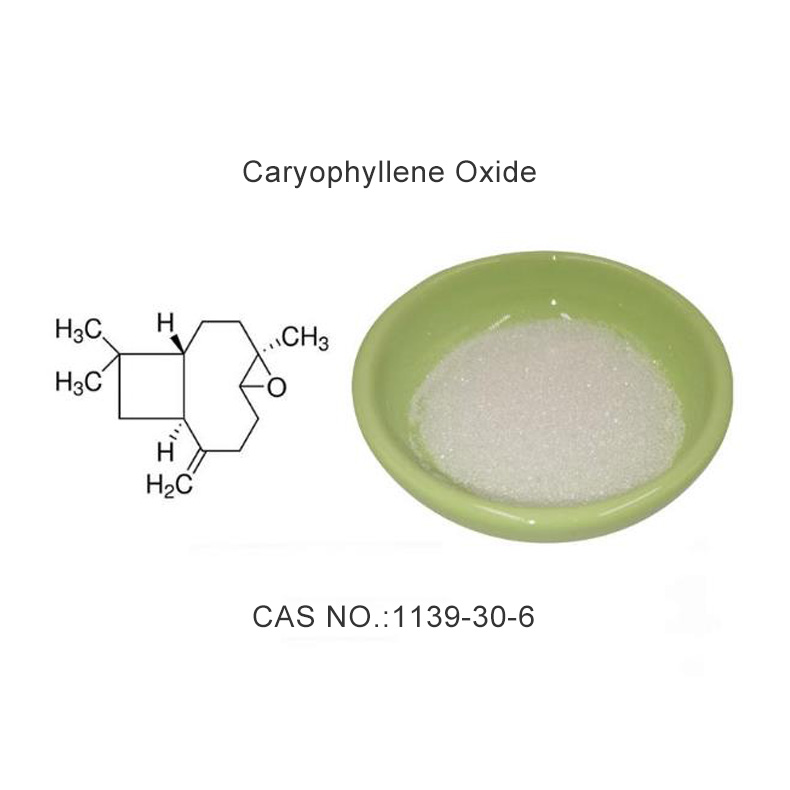Caryophyllene oxide is a compound with multiple applications, widely used in fragrance, food, pharmaceutical and agricultural fields. It is highly safe and has antibacterial, anti-inflammatory and antifungal properties. When used, the appropriate solvent and storage conditions should be selected according to specific needs to ensure its stability and effectiveness.

CAS number: 1139-30-6
English name: CARYOPHYLLENE OXIDE
Chemical properties of caryophyllene oxide
Melting point: 62-63°C (lit.)
Boiling point: 301.3°C (roughestimate)
Density: 0.96
Refractive index: 1.4956FEMA:4085|BETA-CARYOPHYLLENEOXIDE
Flash point: >230°F
Storage conditions: 2-8°C
Solubility: Methanol (Slightly)
Form: Crystalline Powder
Color: White
Odor: at 100.00 %. sweet fresh dry woody spicy
Fragrance: woody
Biological source: synthetic
Water solubility: insoluble in water
JECFANumber: 1575
BRN: 148213
LogP: 4.57
EPA Chemical Substance Information: 5-Oxatricyclo[8.2.0.04,6]dodecane,4,12,12-trimethyl-9-methylene-,(1R,4R,6R,10S)-(1139-30-6)
Fragrances and daily chemicals:

- Perfumery: Used as a woody-spicy modifier, commonly found in lavender, amber, and woody perfumes.
- Cosmetics: The addition amount is usually 0.05–20 ppm (finished product) or 0.01–5 wt-% (semi-finished product), which can give a lasting woody aroma and a mild and refreshing feeling.
- Oral care: Toothpaste, mouthwash, etc. use its antibacterial and fragrance properties.
Food flavoring: It can be used as a natural food flavor for baking, candy, and beverages to provide a warm and spicy background flavor.
Medicine and health care:
- Analgesia and anti-inflammatory: Animal experiments show that it has a significant inhibitory effect on acetic acid-induced pain.
- Antifungal: Used in in vitro models to treat fungal infections such as onychomycosis.
- Antioxidant: DPPH method IC₅₀≈5.4 mg/mL, can be developed as a natural antioxidant.
- Reagents for calcium channel blockade and myocardial protection research.

